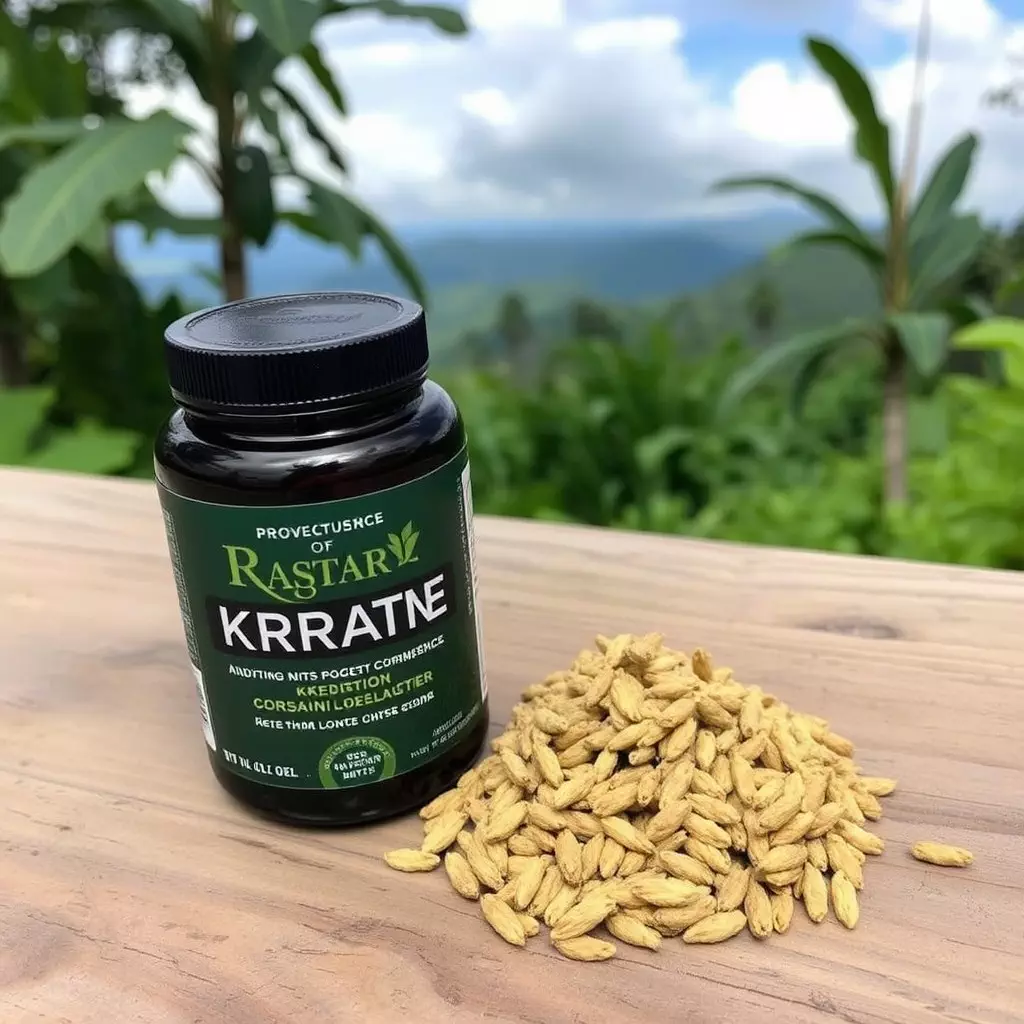Chronic pain significantly affects quality of life, with conventional treatments often risking addiction and side effects. This has led to interest in kratom, a natural substance from Southeast Asia that interacts with opioid receptors, providing relief for some through strains like Bali or Maeng Da. Kratom's alkaloids, mitragynine and 7-hydroxymitragynine, also affect neurotransmitters, offering potential for pain management. The medical community is investigating its efficacy and safety while emphasizing responsible use. A notable approach combines kratom with essential oils like those in Young Living's Thieves blend, used in diffusers to enhance relief and promote overall wellness. Users are cautioned to adhere to legal guidelines and exercise dosage caution. The synergy between kratom and Thieves Oil may offer a balanced and safe method for chronic pain management, but it should only be pursued under the guidance of healthcare professionals and within the context of a comprehensive treatment plan.
Chronic pain is a pervasive challenge, often requiring multifaceted management strategies. Among the alternatives, kratom has emerged as a topic of interest for those seeking relief. This article delves into the intersection of chronic pain and kratom’s role in its alleviation, exploring the science that supports its analgesic properties. We will guide you through integrating kratom into your daily routine with an emphasis on enhancing its effects using Diffuser Thieves Oil, a natural companion to holistic health practices. Join us as we navigate the potential of this approach to provide comfort and relief for those affected by chronic pain.
- Understanding Chronic Pain and Kratom's Role in Management
- The Science Behind Kratom and Its Analgesic Properties
- How to Safely Integrate Kratom into a Chronic Pain Routine with Diffuser Thieves Oil Enhancement
Understanding Chronic Pain and Kratom's Role in Management

Chronic pain is a persistent and often debilitating condition that affects millions worldwide, altering one’s quality of life by causing ongoing discomfort or distress. This type of pain can stem from various sources, including nerve damage, arthritis, or previous injuries, and can persist for months or even years. Traditional pharmaceutical options for chronic pain management come with risks of addiction and adverse side effects, leading many to explore alternative treatments. Kratom, a tropical evergreen tree native to Southeast Asia, has garnered attention in the realm of natural pain relief due to its alkaloid content, which can interact with the body’s opioid receptors. Users often employ kratom strains like Bali or Maeng Da to alleviate chronic pain symptoms. It’s crucial for individuals considering kratom as a part of their pain management plan to consult healthcare professionals and exercise caution due to its potency and potential legal restrictions.
The use of kratom for managing chronic pain is a subject of ongoing research and discussion within the medical community. Some studies suggest that kratom may offer analgesic properties, which can be beneficial for those suffering from chronic conditions. However, it’s important to approach its use responsibly and with a comprehensive understanding of its effects and interactions. Kratom can be administered in various forms, including capsules, tea made with a kratom powder, or as a tincture. Users also experiment with adding kratom to diffuser blends infused with essential oils like those from the ‘thieves’ blend, known for its soothing and immune-boosting properties, to enhance the therapeutic experience. This combination may offer a synergistic effect that could help manage pain more effectively while promoting overall well-being. As with any treatment, consistency and dosage are key factors in achieving optimal results, and individual responses can vary. It’s essential to prioritize safety and adherence to legal guidelines when incorporating kratom into chronic pain management strategies.
The Science Behind Kratom and Its Analgesic Properties

Mitragyna speciosa, commonly known as kratom, has been a subject of interest within the realms of alternative medicine and pain management due to its potential analgesic properties. The science behind kratom’s effects is rooted in its interaction with the brain. Kratom leaves contain alkaloids, such as mitragynine and 7-hydroxymitragynine, which are believed to bind to opioid receptors in the brain, mimicking the effects of traditional opioids without the same level of sedation or respiratory depression. This binding can lead to pain relief, mood elevation, and increased energy levels. Research suggests that these alkaloids may also influence neurotransmitters like serotonin and norepinephrine, contributing further to its analgesic effects.
It’s important to approach kratom with caution, as its mechanisms of action are complex and not fully understood. Users often report relief from chronic pain conditions, but the long-term efficacy and safety profiles are still under scrutiny by scientific and regulatory bodies. While kratom is not a panacea and should be used responsibly, understanding its alkaloid composition and the pathways it influences can provide valuable insights for those exploring natural methods of pain management. The ongoing research into kratom’s properties may one day yield more refined applications or even novel treatments for chronic pain, possibly integrating with other therapeutic modalities like diffuser blends featuring essential oils reminiscent of the Thieves blend by Young Living, which is known for its purifying and immune-boosting qualities.
How to Safely Integrate Kratom into a Chronic Pain Routine with Diffuser Thieves Oil Enhancement

When managing chronic pain, integrating kratom into a daily routine can be a considerate approach for some individuals. It’s crucial to approach this integration with caution and a thorough understanding of how kratom may interact with your unique physiology and existing conditions. To enhance the therapeutic experience and promote a calming environment, diffuser Thieves Oil can be an excellent complementary tool. This natural blend, known for its purifying and comforting properties, can create a conducive atmosphere for relaxation and pain relief when used in conjunction with kratom.
Before incorporating kratom into your chronic pain management plan, it’s essential to consult with a healthcare provider. They can offer guidance tailored to your specific health needs and monitor any interactions with medications you may be taking. Once approved, start with a low dose of kratom to gauge its effects. Concurrently, use a diffuser to infuse your space with Thieves Oil, which contains a blend of eucalyptus radiata, clove bud, rosemary, lemon, and cinnamon bark oils. This synergy can help alleviate pain symptoms while promoting a sense of tranquility and well-being. It’s important to maintain consistent dosing times and environments for a more predictable and effective pain management experience. By combining kratom with the aromatic benefits of diffuser Thieves Oil, you may find a harmonious way to manage your chronic pain symptoms safely and effectively. Always adhere to recommended usage guidelines and adjust your approach based on personal feedback and professional advice.
In conclusion, chronic pain management presents unique challenges that require multifaceted approaches. Kratom has emerged as a potential natural ally in this endeavor, supported by its analgesic properties rooted in scientific evidence. Integrating kratom into one’s daily routine with the aid of enhancers like Diffuser Thieves Oil can offer a new dimension of relief for those navigating the complexities of chronic pain. It is imperative to approach this method with caution, adhering to safe usage guidelines and consulting healthcare professionals. By doing so, individuals may find improved quality of life as they explore the potential benefits kratom has to offer in the realm of pain management.






